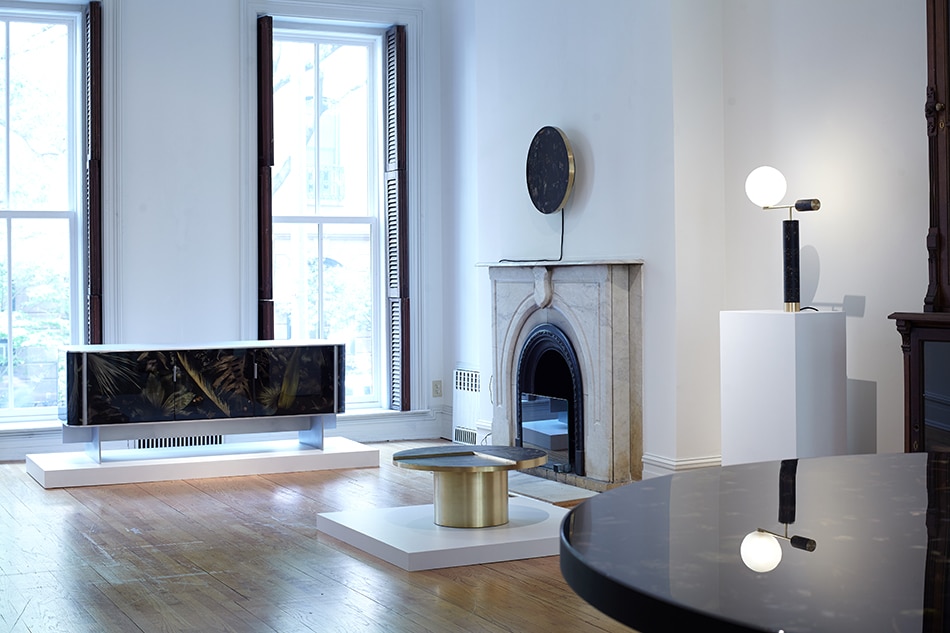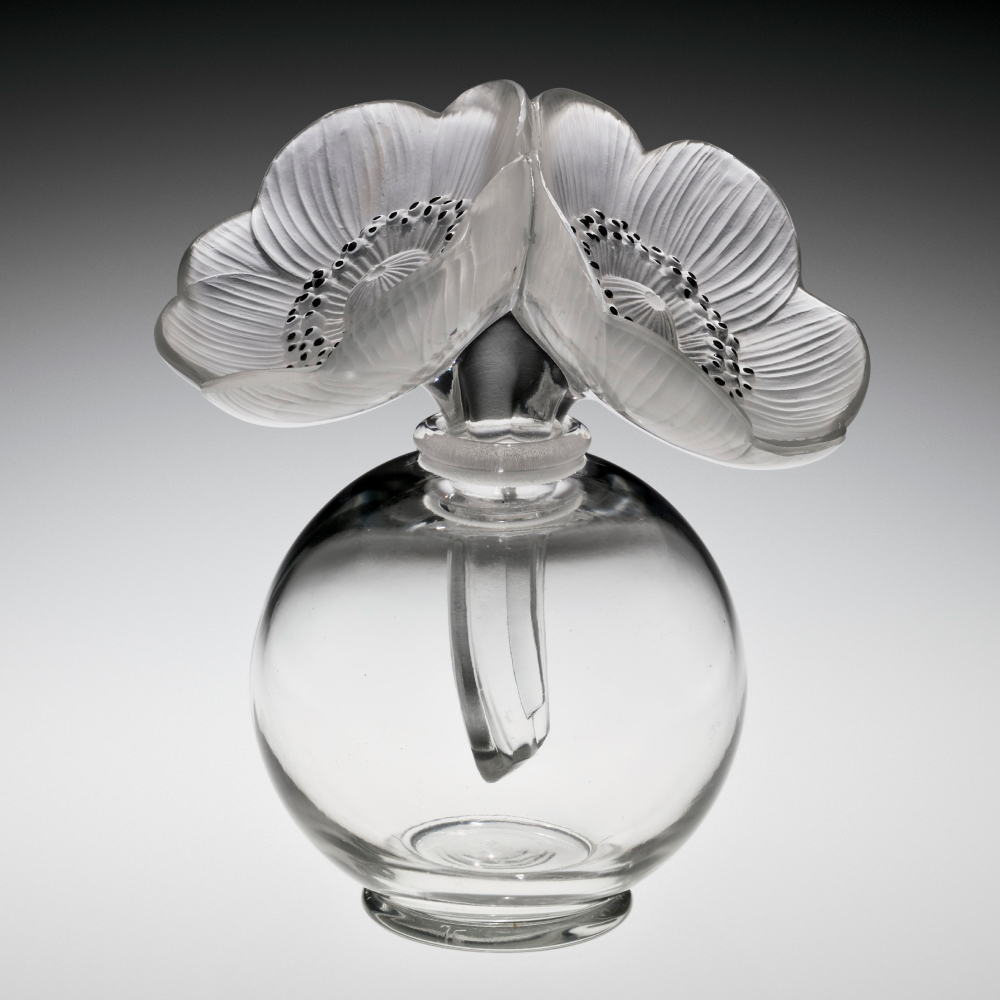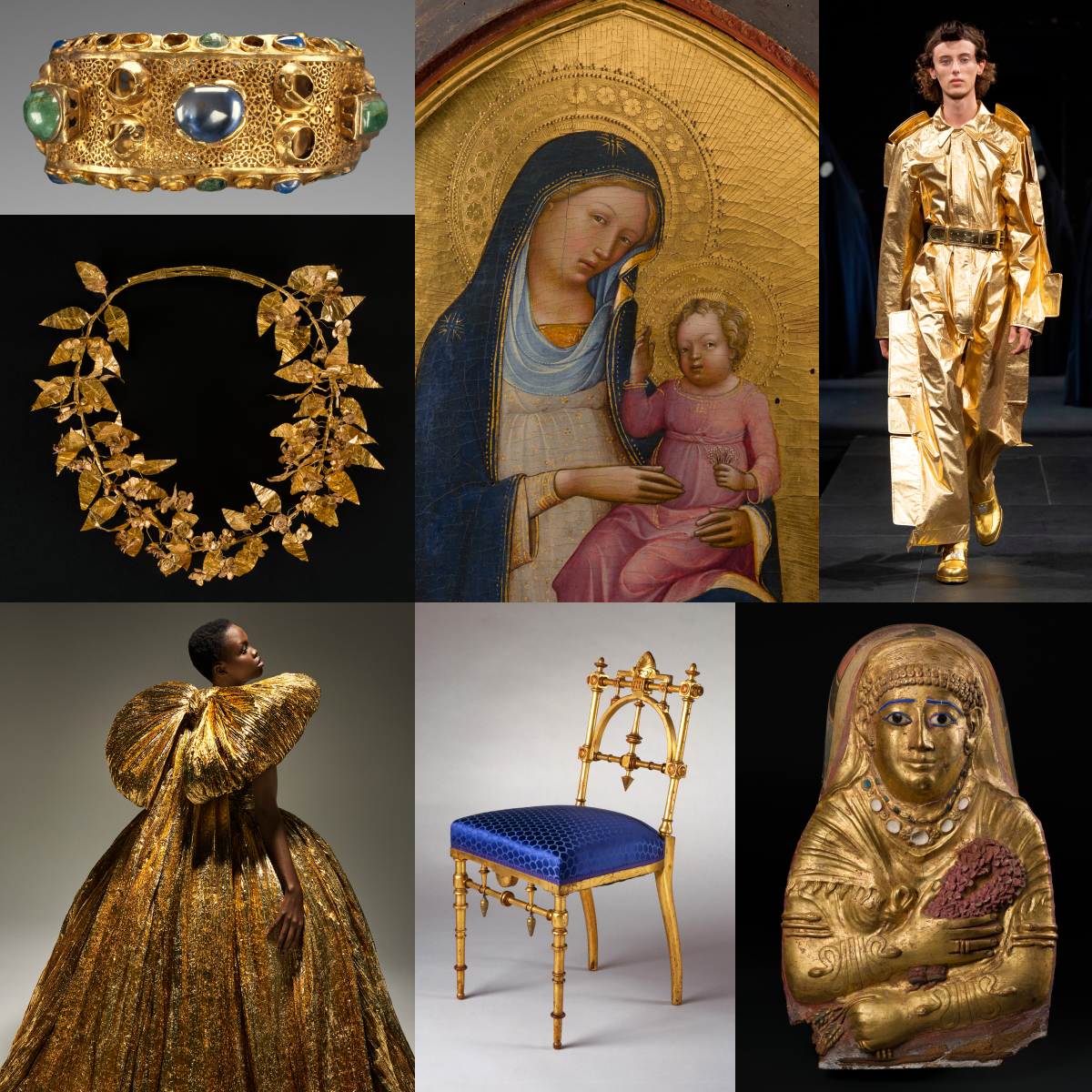
June 5, 2017Twenty First Gallery founder Renaud Vuaillat (left) is currently showing designer Marcin Rusak’s Flora series, a collection that includes tables, cabinets and lighting made using flowers and plants preserved in black resin. Top: A detail of the Rusak’s Flora large table.
A new exhibition at Twenty First Gallery, in Manhattan, displays tables, lamps and cabinets in which flower blossoms and leaves appear frozen in time. The botanical materials are suspended in translucent black resin, so that they appear to be billowing up from some murky pond. “They look a bit like Flemish paintings,” says Marcin Rusak, the Polish-born, London-based designer who created them. “It’s all about change, aging and transformation.”
“It makes this rock ’n’ roll as well as melancholic first impression,” says gallery founder Renaud Vuaillat, who is hosting Rusak’s first comprehensive exhibition, “Flora Noir,” through June 16. “To me, it looks like a mix of Damien Hirst and a seventeenth-century still life. I had seen resin work before — but nothing like this.”
Many of the pieces will evolve slightly over time. Rusak, who comes from a family of flower growers in Warsaw and began exploring new uses for flower-shop waste as a design student at London’s Royal College of Art, has devised materials that allow him to play with Mother Nature. His Perishable sculptures, for instance, are made from organic matter that is meant to gradually decay, slump and fall apart, he says, so “you can’t really pass it on to the next generation.”
The furniture and lighting on view at Twenty First Gallery is permanent, but in many of the pieces, Rusak has allowed the plant materials to gradually shrink within the resin, which “builds up silvery points of light around them, almost like moss grows on a tree,” he says. “I learned how to control the material and can have the flowers decaying or permanently fixed.”
Rusak is just the latest attention-grabbing designer to be discovered by Vuaillat, a dealer who once specialized in 18th-century antiques but now has his eye trained strictly on the new. His gallery, located on the first floor of the Chelsea townhouse where he lives, presents the beautifully crafted, boundary-pushing works of European talents, including whimsical bronze tables and mirrors by Hubert le Gall, hefty Murano glass and marble vases by Emmanuel Babled and lavish brass marquetry cabinets by Erwan Boulloud.

Flora lamp I
One particular work pried his attention away from French antiques and inspired him to plunge headfirst into the world of contemporary design a decade ago. “It was a piece by Hubert le Gall,” he says. “A big bronze gueridon with connected floor lamp that looked like a bird fishing, where the top was rippling water and the base was formed by the bird’s legs. I thought it was so beautiful and so much closer to our lives today than an eighteenth-century piece.”
Before that, Vuaillat, who was born and raised in Paris, had spent roughly two decades devouring every bit of information he could find on historical decorative arts as he gradually built his reputation. Beginning as a fledging 22-year-old vendor at the Porte de Clignancourt flea market, he rose to become a respected dealer with a beautiful street-level gallery on Rue de Lille just a few steps from the Musée d’Orsay.
“When I started, I had no idea what I was doing, so I had to learn in the field,” says Vuaillat. “But this was in the nineties, when the flea market was at its height. It was like the meatpacking district for antiques, where all the pieces from all over the world were being redistributed. It was so amazing to see so many pieces at once, and I learned a lot, about both antiques and people.”
Shortly after the turn of the century, however, he noticed a change. “It was becoming more and more difficult to find good antiques,” he says. “It felt as if we had emptied Europe. I still enjoyed the hunt, but I was always coming back empty-handed.” Looking for quality pieces to sell to his clients, Vuaillat began producing his own line of furniture inspired by antiques, such as an Egyptian Thebes-style stool that he pumped up in scale and had crafted from bronze in Lebanon.
The New York event and interior designer Antony Todd saw Vuaillat’s creations and in 2006 began selling them at his Greenwich Village store, along with a few of Vuaillat’s antiques. The collection “was a huge success,” in a way that it hadn’t been in Paris, says Vuaillat. “I moved to New York for this reason. People here are open to discovering new things. It’s less judgmental. In Paris, people thought it was a little too inspired from antiques — and you’re not really a designer if you do that.”
Despite New Yorkers’ enthusiasm for his creations, Vuaillat dropped everything in 2007, after his transcendent moment with le Gall’s work, to begin partnering with contemporary artists and designers on limited-edition furniture that he showed in the Manhattan gallery he opened. Even though these pieces are three centuries newer than the antiques he used to sell, parallels exist. “After looking at antique pieces for twenty years, I have a good sense of how things are built and balanced,” he explains. “In the eighteenth-century pieces, the carving was very important — they were taking their time and pushing the limits of what was possible.” The contemporary designers he works with today do exactly the same thing, he says, but with new materials and processes.

The Flora screen, which is made of flowers and black resin, has a brass border and base.
François Corbeau, for instance, makes sculpted wood cabinets covered with tin that he hammers and polishes to a mirror finish — an elaborate multi-step process so laborious that a piece takes about six months to complete. “I have a particular relationship with pieces like that,” notes Vuaillat. “You can just see all the love coursing through it.”
Vuaillat sat down with 1stdibs recently to offer some advice for new collectors of contemporary fine design.
Is there one type of piece that’s an easy first purchase?
Side tables are a great first piece. They can easily be a small functional sculpture, go almost anywhere and are usually not that expensive compared with other things.
How do you select specific works?
It’s as simple as following your instincts and your heart. It’s very intuitive. Personally, some pieces speak to me as if they were alive. But you can mix all different periods, as long as you stay on the same aesthetic line. For instance, if you collect rustic antiques, don’t put very delicate things next to them. Choose something with a similar scale. It has to remain coherent.
Should fine design pieces be used?
Some people hardly touch them, but I recommend using them. Even if something gets scratched, it’s always fixable. To surround yourself with beauty but not actually use it is like putting up a barrier. It’s more satisfying to sit on them, eat on them and put objects on them that you admire.











